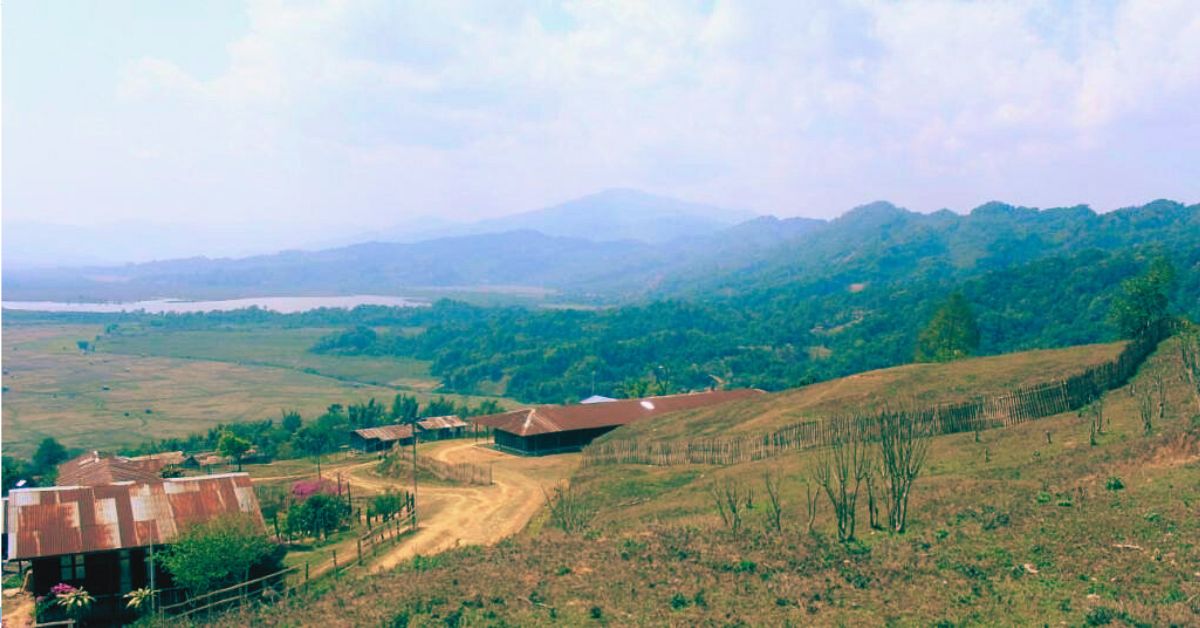Tucked away in the far corner of Northeast India, Pangsau Pass is a hidden gem waiting to be explored. This mountain passage acts like a bridge, connecting the peaceful valleys of Arunachal Pradesh with the bustling lands of Myanmar. Nicknamed “Hell Pass” during World War II for its tough terrain, Pangsau Pass today is known for its stunning scenery, deep history, and vibrant culture. Unlike the crowded tourist spots, this lesser-known beauty offers travelers a perfect mix of adventure and peacefulness. So, if you’re looking to venture off the beaten path and discover the secrets of Northeast India, Pangsau Pass is a must-visit! Let’s journey together through this incredible place, where we’ll find breathtaking views, historical sites, and the warm welcome of the local communities.
How to reach:
By Plane:
- Fly into Dibrugarh Airport in Assam. This airport connects to major Indian cities like Delhi, Kolkata, and Guwahati.
- Once you land, you’ll need to take a taxi or bus to Jairampur, a town in Arunachal Pradesh (around 4-5 hours away). From there, it’s a 25 km journey to Pangsau Pass. Local transportation can take you the rest of the way.
By Train:
- Tinsukia Railway Station in Assam is the closest train station, about 120 km from Pangsau Pass.
- Catch a train to Tinsukia, which has connections to major Indian cities.
- Similar to flying in, you’ll need to travel by road from Tinsukia to Jairampur (3-4 hours) before reaching Pangsau Pass with a local vehicle.
By Road:
- This option offers a scenic drive through Assam and Arunachal Pradesh.
- If you’re starting from Guwahati, Assam’s capital, you can hire a taxi or bus to Jairampur (approximately 580 km, 12-14 hours).
- Dibrugarh to Jairampur is a shorter trip (around 4-5 hours, 170 km) by taxi or bus.
- No matter where you come from in Assam, Jairampur is your jumping-off point. From there, local transportation will take you the final 25 km to Pangsau Pass.
Best time to visit:
Winter Wonderland (October to February)
Winter paints Pangsau Pass in cool, refreshing hues. With temperatures between 10°C and 20°C, it’s perfect for sightseeing and outdoor adventures. Clear skies unveil breathtaking panoramas of the surrounding landscapes. Plan your trip for January to witness the Pangsau Pass Winter Festival, a vibrant celebration of the region’s rich culture and traditions.
Spring Awakening (March to April)
Spring brings Pangsau Pass to life! Temperatures climb to a pleasant 15°C to 25°C, making it an ideal time to visit. Witness the region erupt in a riot of colors with blooming flowers and lush greenery. Lace up your boots and embark on a trek or a nature walk to fully experience the rejuvenated landscape.
Monsoon Magic (May to September)
The monsoon season transforms Pangsau Pass into a land of cascading waterfalls and vibrant greenery. However, heavy rainfall brings the risk of landslides and slippery roads, making travel challenging. It’s generally recommended to avoid visiting during this season.
Attractions:
Pangsau Pass Viewpoint:
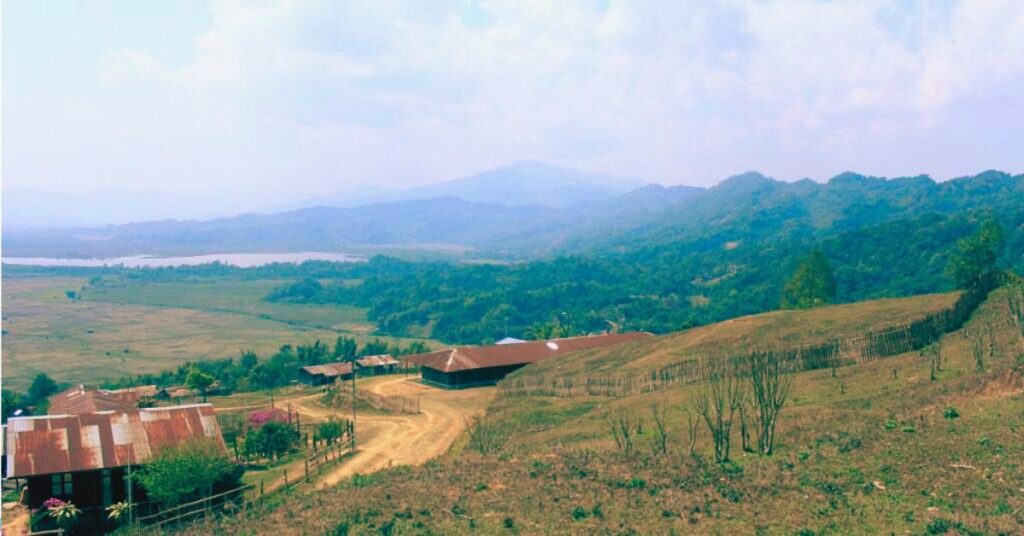
Nature lovers and photographers, rejoice! The Pangsau Pass Viewpoint is a dream come true. Imagine a spot where rolling green hills and valleys stretch out as far as you can see. That’s the magic of this viewpoint. On a clear day, you might even catch a glimpse of the mysterious Lake of No Return, shimmering in the distance. The peacefulness of the place, along with the stunning scenery, makes it perfect for a moment of reflection or simply relaxing. Whether you’re snapping photos to capture the beauty or just soaking it all in, the Pangsau Pass Viewpoint is a must-see on your trip to Arunachal Pradesh. It’s a hidden gem waiting to be discovered!
Lake of No Return:
Just across the border in Myanmar, a short distance from Pangsau Pass, lies the Lake of No Return. This lake isn’t just beautiful, it’s shrouded in legends and whispers of World War II. Stories say soldiers and airplanes vanished around its waters, giving it its haunting name.
But don’t let the spooky stories scare you away! The Lake of No Return is undeniably stunning. Imagine a lake with still, clear water reflecting the lush green hills that surround it. It’s a sight that will leave you breathless.
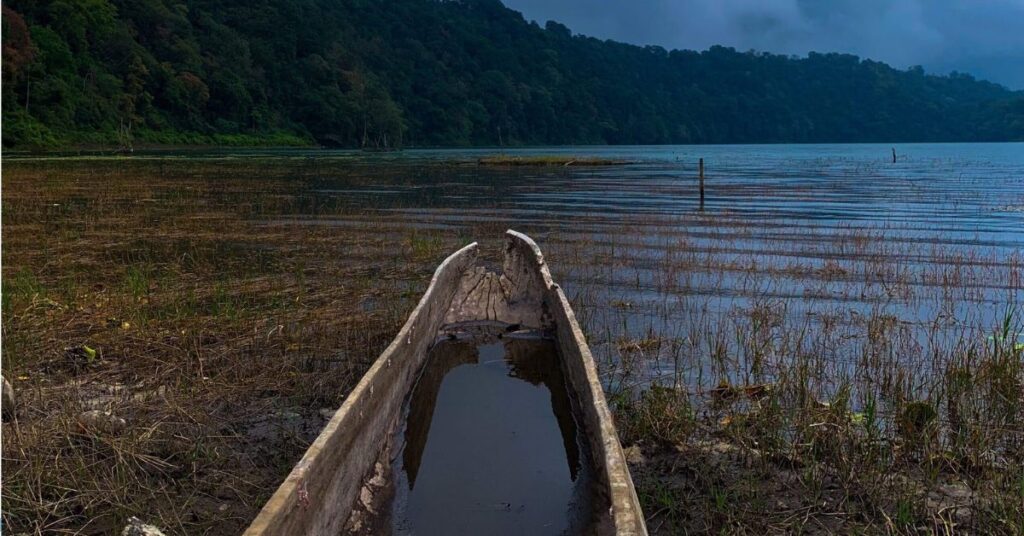
World War II Memorial:
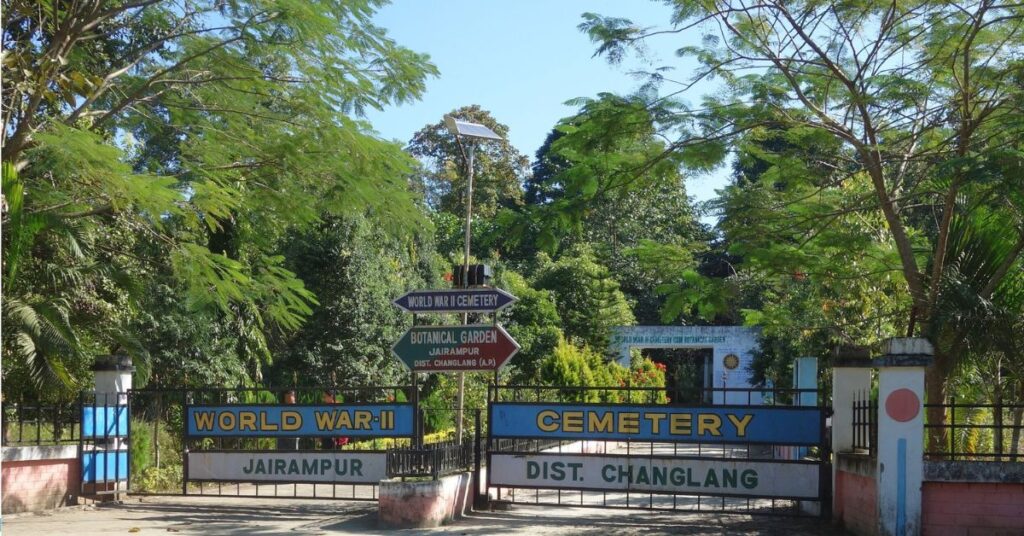
Not far from Pangsau Pass stands a solemn reminder of the region’s role in World War II – the World War II Memorial. This memorial isn’t just a monument, it’s a tribute to the brave soldiers who fought and gave their lives in this harsh landscape.
Pangsau Pass was a critical point during the war. The famous Stilwell Road, also called the Ledo Road, snaked its way through here. The memorial offers a quiet space for reflection, where visitors can learn about the soldiers’ struggles and the strategic importance of the pass.
Stilwell Road:
The Stilwell Road isn’t just a road, it’s a testament to human will. Imagine a path stretching from Ledo in India, winding through Myanmar, all the way to Kunming in China. This engineering marvel, built during World War II, was a lifeline. Named after General Joseph Stilwell, who led its construction, the road stands as a symbol of sacrifice and determination. Cruise down this historic route and feel yourself transported back in time. Imagine the incredible effort it took to carve a path through such tough terrain – dense forests, towering mountains, and wide rivers. Every twist and turn whispers stories of wartime grit and incredible engineering feats.
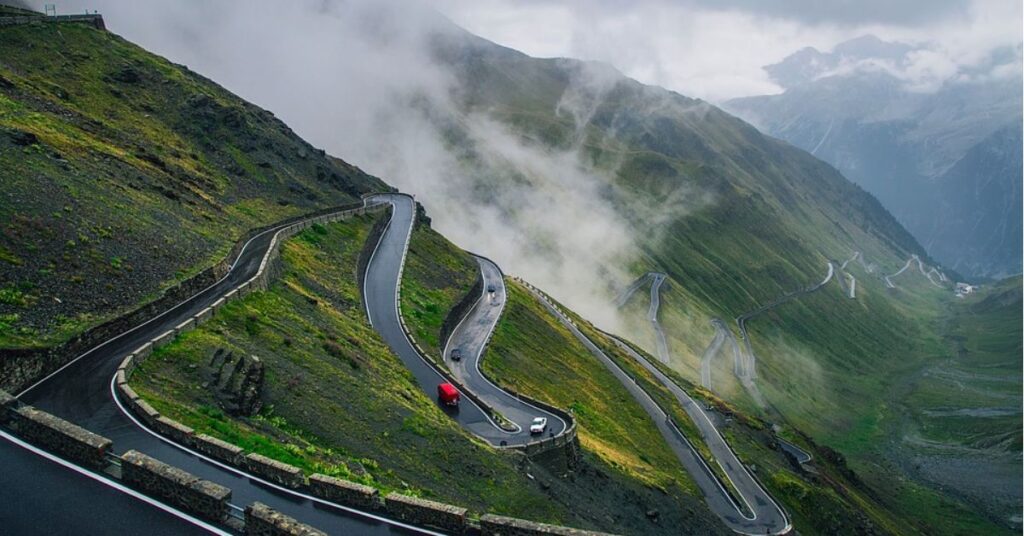
Local Experiences:
Meet the Tribes: Spend time with the Tangsa and Singpho communities, indigenous tribes who call this region home. Learn about their fascinating customs, traditions, and way of life. It’s a chance to gain a deeper appreciation for their unique culture.
Handmade Treasures: Visit local artisans and witness the age-old art of weaving firsthand. Take home a special piece of the region – a handwoven textile or handicraft – as a souvenir to remember your trip.
A Taste of Tradition: Treat your taste buds to local specialties like bamboo shoot dishes, smoked meats, and unique rice preparations. Experience the traditional cooking methods used to create these flavorful dishes distinct to the region.
Live Like a Local: Stay in a traditional homestay and experience the warmth of Arunachali hospitality. This is a more personal and immersive way to connect with the local culture.
Festival Fun: Immerse yourself in the vibrant energy of local festivals like the Pangsau Pass Winter Festival. Witness captivating traditional dances, music performances, and cultural rituals that celebrate the region’s heritage.
Market Mavens: Dive into the lively atmosphere of local markets. Explore stalls overflowing with indigenous products and fresh produce. Chat with friendly vendors and find unique treasures to take home.
Village Adventures: Embark on guided tours through nearby villages like Nampong and Jairampur. Learn about the villages’ history, architectural styles, and the daily lives of the people who call them home.
Nature’s Paradise: Join eco-tours and nature walks led by knowledgeable guides. Discover the rich biodiversity of the region, from its diverse flora to fascinating fauna.
Music and Movement: Enjoy captivating performances of traditional music and dance by local artists. You might even have the opportunity to participate in community gatherings where these vibrant cultural expressions come alive.
Hands-on Learning: Attend workshops on traditional crafts, weaving, and other cultural activities. Get hands-on experience and create your own piece of art or craft to take home as a reminder of your unique experience.
Travel tips:
Permits:
Before you embark on your journey, remember to obtain an Inner Line Permit (ILP). It’s mandatory for all visitors entering Arunachal Pradesh. Make sure you have all the required documents and photocopies readily available.
When to Visit:
For the most pleasant weather and clear skies, aim for a visit between October and April. These are the shoulder seasons, offering comfortable temperatures and ideal conditions for exploring.
What to Pack:
Pack for the weather! Bring warm clothes, especially if you’re visiting during the cooler months. If your trip coincides with the fringes of the monsoon season (May or September), pack rain gear. Comfortable hiking shoes are essential for exploring the natural beauty of the area. Don’t forget any essentials you might need for outdoor activities you plan on doing.
Health and Safety:
Be prepared! Pack a basic first-aid kit and any medications you might need. Staying hydrated is crucial, so bring a water bottle and consider purification tablets or filters if needed. Pangsau Pass is at a higher altitude, so take your time acclimatizing to avoid altitude sickness.
Respecting the Culture:
Remember, you’re a guest! Dress modestly and be mindful of local customs and traditions. It’s always polite to ask permission before taking photographs of people or inside their homes.
Staying Connected:
Cell service can be spotty in remote areas. Let your family and friends know your travel itinerary in advance. Consider bringing a portable power bank to keep your devices charged.
Cash is King:
ATMs might be scarce, and card payments are not widely accepted everywhere. Make sure to carry enough cash for your trip.
Getting Around:
Hiring a reliable local guide or driver familiar with the terrain is highly recommended. The roads can be rugged, so ensure your vehicle is in good condition before you set off.
Local Flavor:
Embrace the local cuisine! Try the delicious dishes, but be mindful of any dietary restrictions or allergies you might have. Stick to bottled or purified water to avoid any water-borne illnesses.
Where to Stay:
Book your accommodations in advance, especially during peak tourist seasons. Consider opting for a homestay for a unique cultural experience and a chance to connect with local hospitality.
Eco-Friendly Travel:
Let’s be responsible travelers! Follow the principles of “Leave No Trace.” Avoid littering and be sure to pack out all your waste. Respect the wildlife and their nature.
Conclusion
Unveiling the magic of Arunachal Pradesh, Pangsau Pass stuns with its natural beauty, historical intrigue, and vibrant culture. Xplro.com, your travel companion, will guide you on this unforgettable journey. Witness breathtaking vistas from the Pangsau Pass Viewpoint, or unravel the mystery of the Lake of No Return. History buffs will be captivated by the World War II Memorial and the legendary Stilwell Road. Dive into local traditions with festivals, village visits, and interactions with indigenous communities. Hike serene trails, tantalize your taste buds with local delicacies, or even participate in cultural workshops. Xplro.com will ensure a smooth and respectful visit by helping you secure permits, navigate the best time to visit, and pack accordingly. Let’s explore responsibly! Practice “Leave No Trace” principles and embrace the spirit of discovery with Xplro.com as your guide. Pangsau Pass awaits – an unforgettable adventure awaits!
FAQs
What exactly is Pangsau Pass?
- Pangsau Pass is a picturesque mountain pass located on the border between India and Myanmar, in Arunachal Pradesh, India. It’s renowned for its stunning vistas, historical importance, and rich cultural tapestry.
What’s the best way to get to Pangsau Pass?
- To reach Pangsau Pass, you’ll need to travel by road from Dibrugarh or Tinsukia in Assam to Nampong in Arunachal Pradesh. From Nampong, a short drive will take you to the pass.
Are permits required to visit Pangsau Pass?
- Yes, visitors need an Inner Line Permit (ILP) if they are Indian citizens, or a Protected Area Permit (PAP) if they are foreign nationals. These permits can be obtained from designated offices or online.
When is the ideal time to visit Pangsau Pass?
- The optimal time to visit Pangsau Pass is from October to April, when the weather is mild and favorable for sightseeing and outdoor activities.
What attractions can I see at Pangsau Pass?
- Key attractions include the Pangsau Pass Viewpoint, the enigmatic Lake of No Return, the World War II Memorial, and the historic Stilwell Road. The Pangsau Pass Winter Festival is also a notable event.
Can visitors go to the Lake of No Return?
- The Lake of No Return is situated in Myanmar, and visiting it typically requires crossing the border. Check with local authorities or tour operators for any special permits or travel arrangements needed.
What types of accommodation are available near Pangsau Pass?
- Accommodation options near Pangsau Pass include guesthouses and homestays in Nampong and Jairampur. It’s advisable to book your stay in advance, especially during high tourist seasons.
What local experiences should I experience while at Pangsau Pass?
- Be sure to engage with local tribes, try traditional foods, explore local markets, and participate in cultural festivals like the Pangsau Pass Winter Festival for a truly immersive experience.
Is traveling to Pangsau Pass considered safe?
- Yes, traveling to Pangsau Pass is generally safe. However, stay informed about current conditions, heed travel advisories, and follow standard safety practices.
What should I bring for my trip to Pangsau Pass?
- Pack warm clothing, sturdy trekking shoes, a basic first-aid kit, and rain gear if you’re visiting during the monsoon. Also, carry enough cash as ATMs might not be readily available.
Are there opportunities for trekking around Pangsau Pass?
- Absolutely, there are several trekking routes and nature walks available around Pangsau Pass. These trails offer beautiful scenery and a chance to connect with nature. Hiring a local guide is recommended.
What cultural etiquette should I follow?
- Show respect for local customs and traditions, dress conservatively, ask for permission before taking photos of people or inside homes, and maintain polite interactions with the local community.




